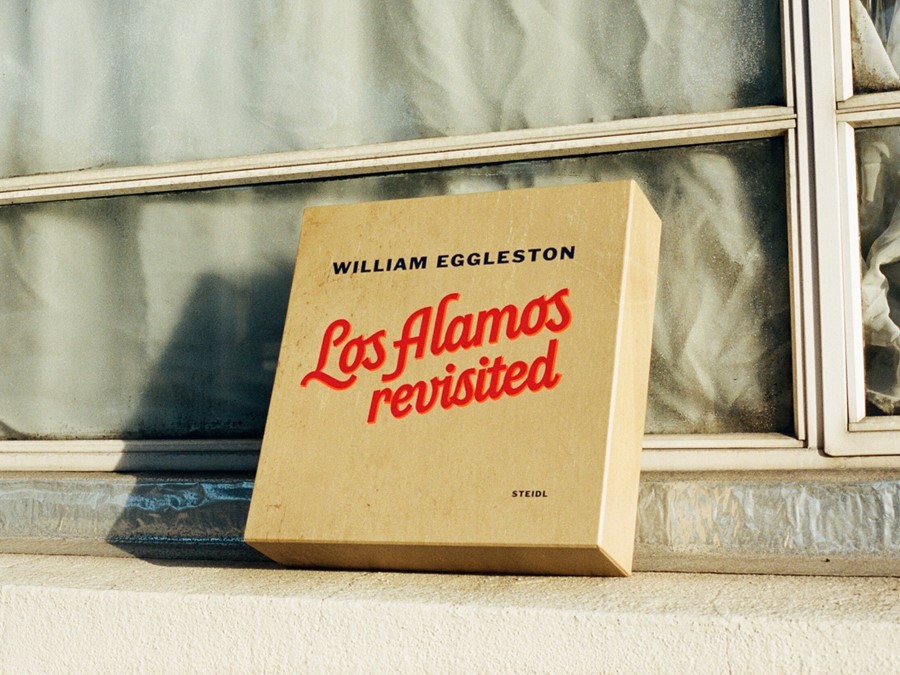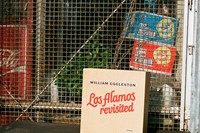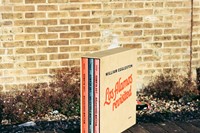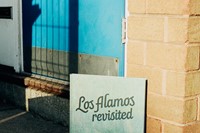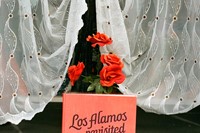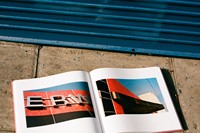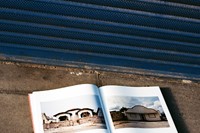Discovering the brilliance of William Eggleston's box set, Los Alamos Revisited
Any William Eggleston book is special – the series' titles, the harmonious colours, the clever editing. A 588 page, three-part hardcover, clothbound box set, housed in a satisfying slipcase is even more special. To celebrate the re-release of Eggleston's iconic Los Alamos Revisited set, published by Steidl, here we present some reasons why you should buy a copy of your own.
Discover what it was like to go on a roadtrip with William Eggleston...
The Los Almamos Revisited series contains a definitive edit of images taken by Eggleston, camera in hand, and writer, museum director and curator William Hopps at the wheel, on a roadtrip throughout the southern states of the US. They began in Memphis, where Eggleston lived for over 50 years, and drove on to the Mississippi Delta, New Orleans, Las Vegas and southern California, before ending at the Santa Monica Pier. Eggleston always worked quickly, sometimes, he said, he never even looked through the lens. "I only ever take one picture of one thing. Literally. Never two."
"I only ever take one picture of one thing. Literally. Never two" — William Eggleston
Witness the importance of collaboration...
A key part of Eggleston's success, aside from his brilliant eye, was his partnerships with others. The 2200+ images Eggleston captured during his and Hopps' roadtrip were not edited until over thirty years later, with the help of Hopps, Caldecot Chubb and Eggleston's son Winston. They split the photographs into a set of five portfolio boxes of dye-transfer prints. Hopps' original vision was to create a vast Los Alamos exhibition, but the negatives became separated, with Hopps retaining only about half. He later returned what was thought to be the remaining negatives to the Eggleston Artistic Trust in Memphis where they were catalogued as Box #17. Yet after Hopps' death in 2005 another long-lost box of negatives was discovered. These were catalogued as Box #83 and documented in a hand-made reference book called Lost and Found Los Alamos. In 2011, the photographer's son William Eggleston III and Mark Holborn reviewed the now complete set of negatives, finalising the sequence with Winston Eggleston at Steidl in 2012.

Where on earth is Los Alamos?
"While driving through New Mexico in 1973, William Eggleston stopped at Los Alamos, the forested site of the atomic bomb's clandestine development", writes driving buddy Hopps in the book's foreword. It's highly likely that you've never visited Los Alamos – it's an isolated place, with rolling hills and not much else. Eggleston thought the town's name would be an appropriate title for the work. "This title cloaks with some irony Eggleston's ostensible subjects, found in a vast American terrain, yet acknowledge his belief in the aesthetic consequences of his private quest."
"A word of advice: Eggleston's love of America is infectious. It'll make you crave America too"
Appreciate beauty in the mundane...
It's shocking to think that Eggleston's first major show at MOMA was ridiculed by critics, in particular for it's "ugly" subject matter. It took time, but it is that "ugly" subject matter that now fascinates us and has gone onto inspire generations of photographers. Wife Rosa Eggleston once said, “Bill at one time said to his great, highly respected friend: well, what am I going to photograph? Everything here is so ugly.’ And our friend said, ‘Photograph the ugly stuff.’ Well we were surrounded everywhere by this plethora of shopping centers and ugly stuff. And that is really initially what he started photographing.”
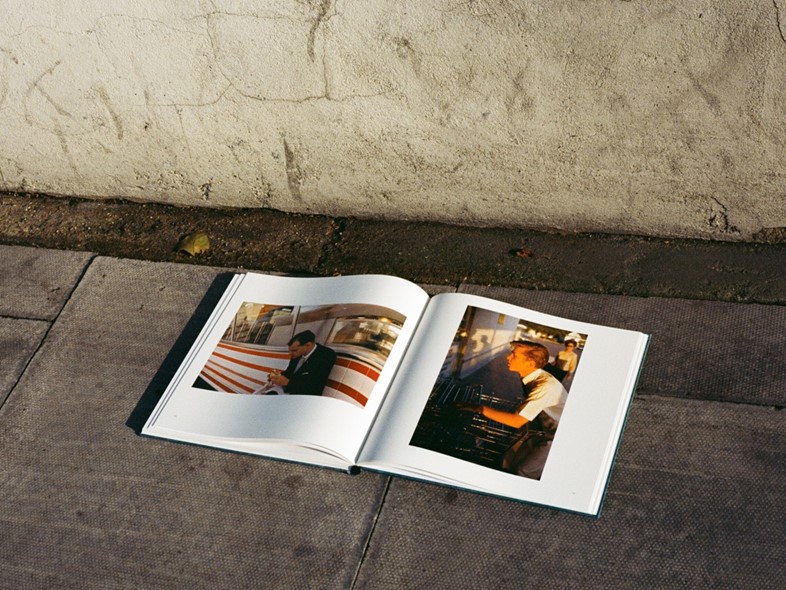
Look out for the highlights...
The series contains some of Eggleston's most iconic works, including Eggleston's first colour photo – a grocery clerk pushing a shopping cart. The transition to colour was important for Eggleston – all of his peers were shooting in black and white; colour was deemed vulgar. Other standouts in the series include a young boy with a black snake wrapped his neck. The boy looks young, about eight or nine. He's standing in front of vibrant graphic signage, listing a selection of snakes, presumably available for purchase.
Understand Eggleston's visual codes...
There's enough pictures here to fully understand Eggleston's lexicon. Like all brilliant creatives, his work can be defined in five key words: colour, Americana, mundane, architectural lines. Eggleston was a visual hoarder: he loved cars and gas stations; he loved signage; he loved food and drinks advertising (more so than the actual thing, it seems). But anyone familiar with Eggleston knows all this. Use these books to discover the other subjects that caught Eggleston's eye. The various plants for example. And the people, who appear very occasionally in his work, are fascinating. When they do pop up, you know why Eggleston wanted to capture them.
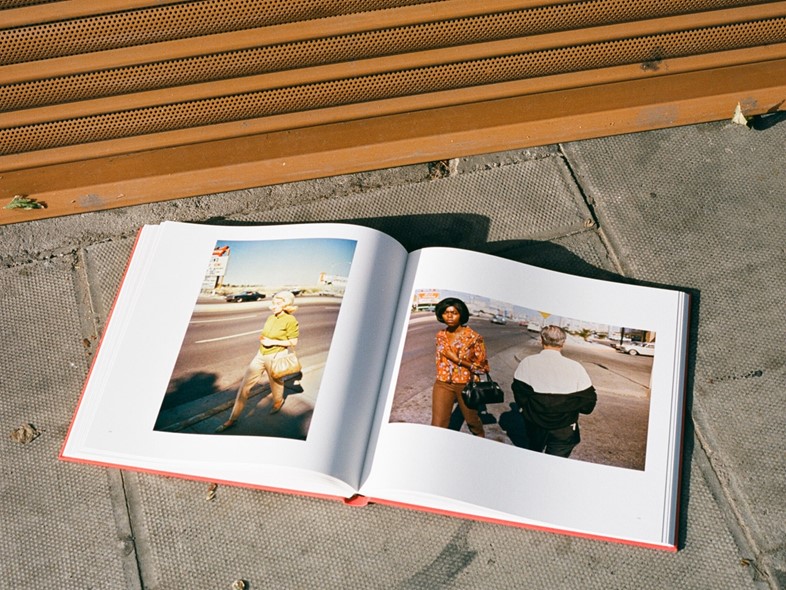
A word of advice...
Eggleston's love of America is infectious. It'll make you crave America too. The wide roads, the briliant light. The diners on every corner. The drive-in movie theatres. The bill boards. It'll make you want to order a burger, fries and root beer, served in a frosted glass.
Los Alamos Revisited by William Eggleston, priced £220, published by Steidl, is available now.
Words by Laura Bradley
